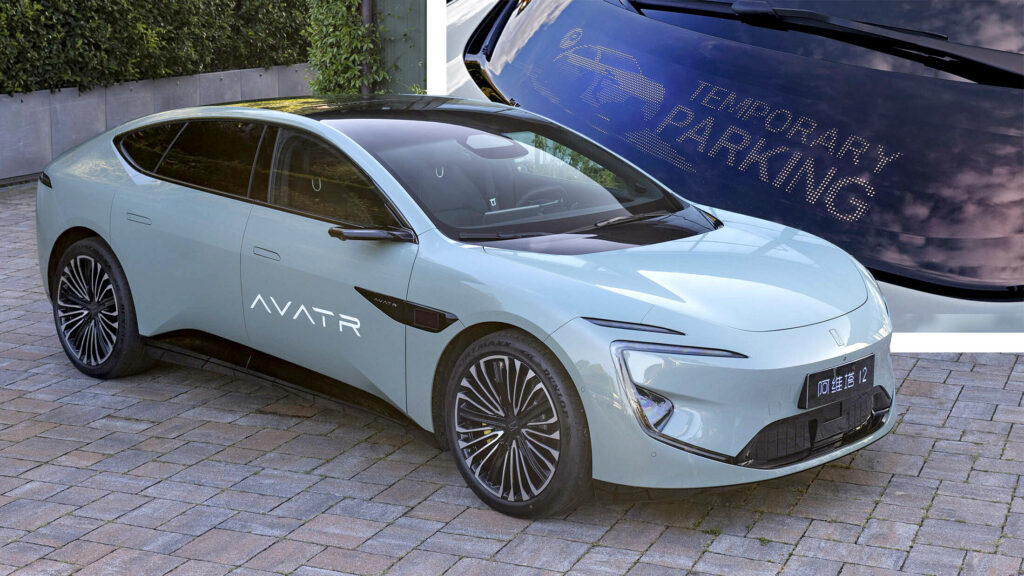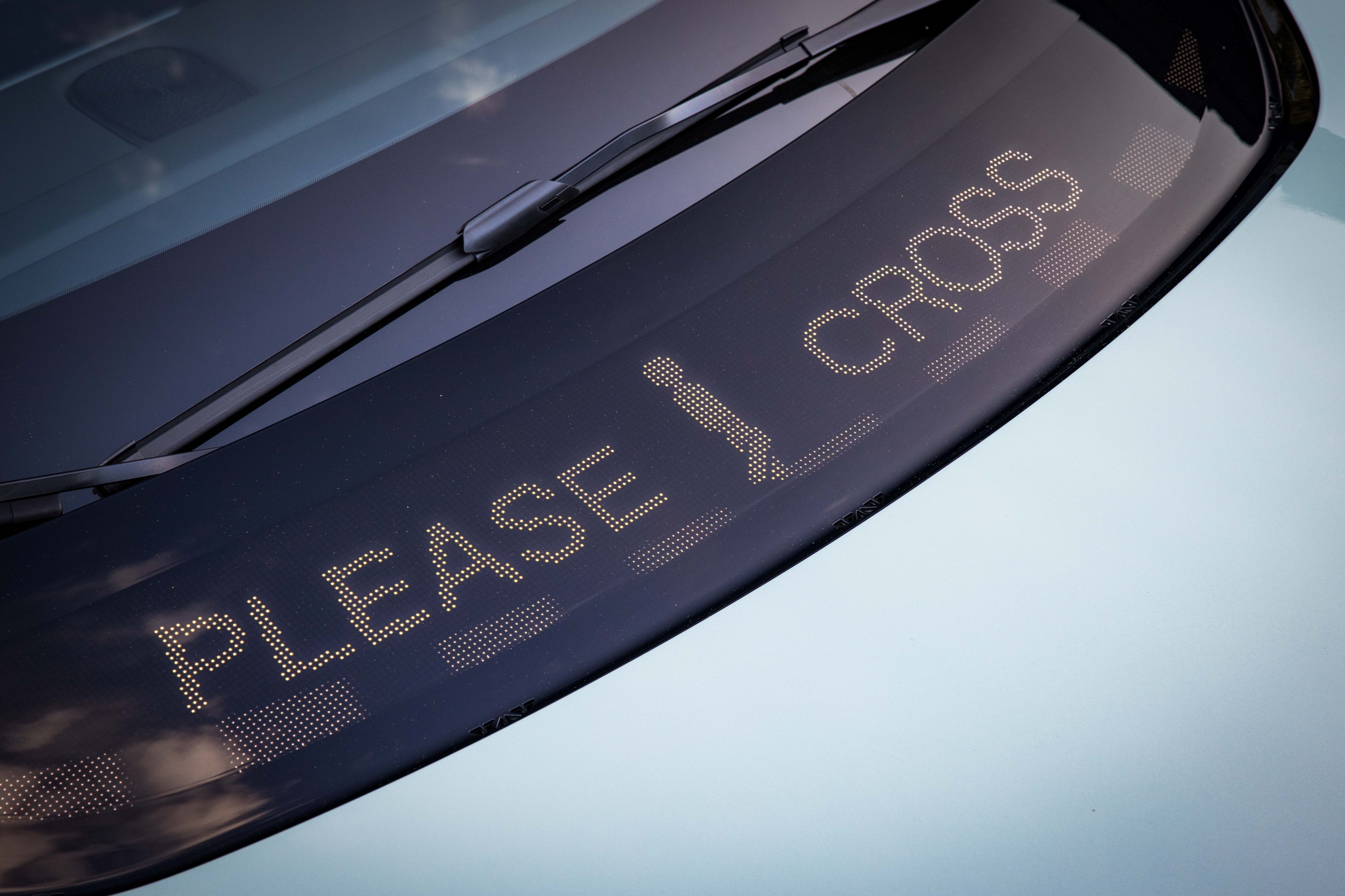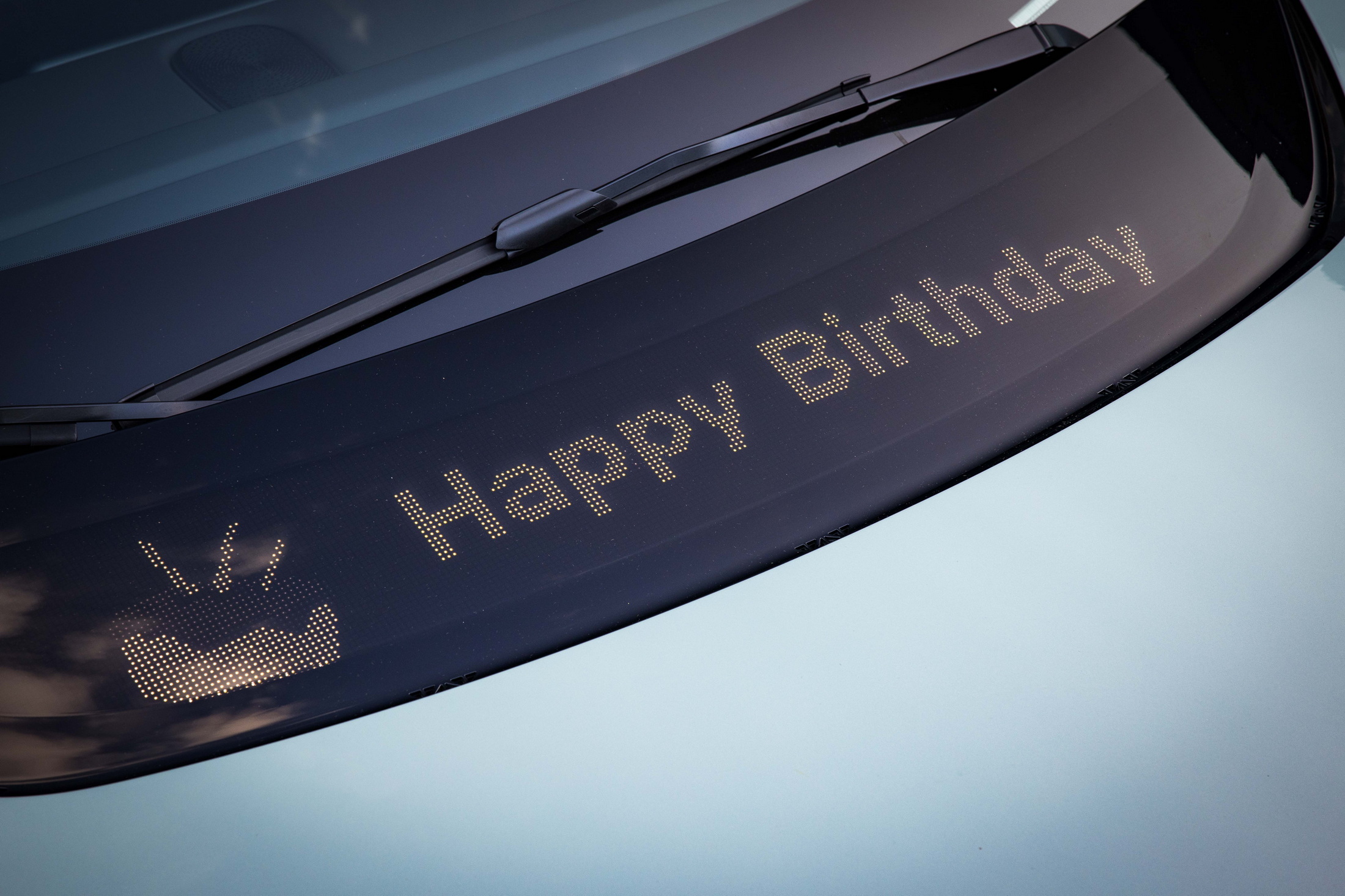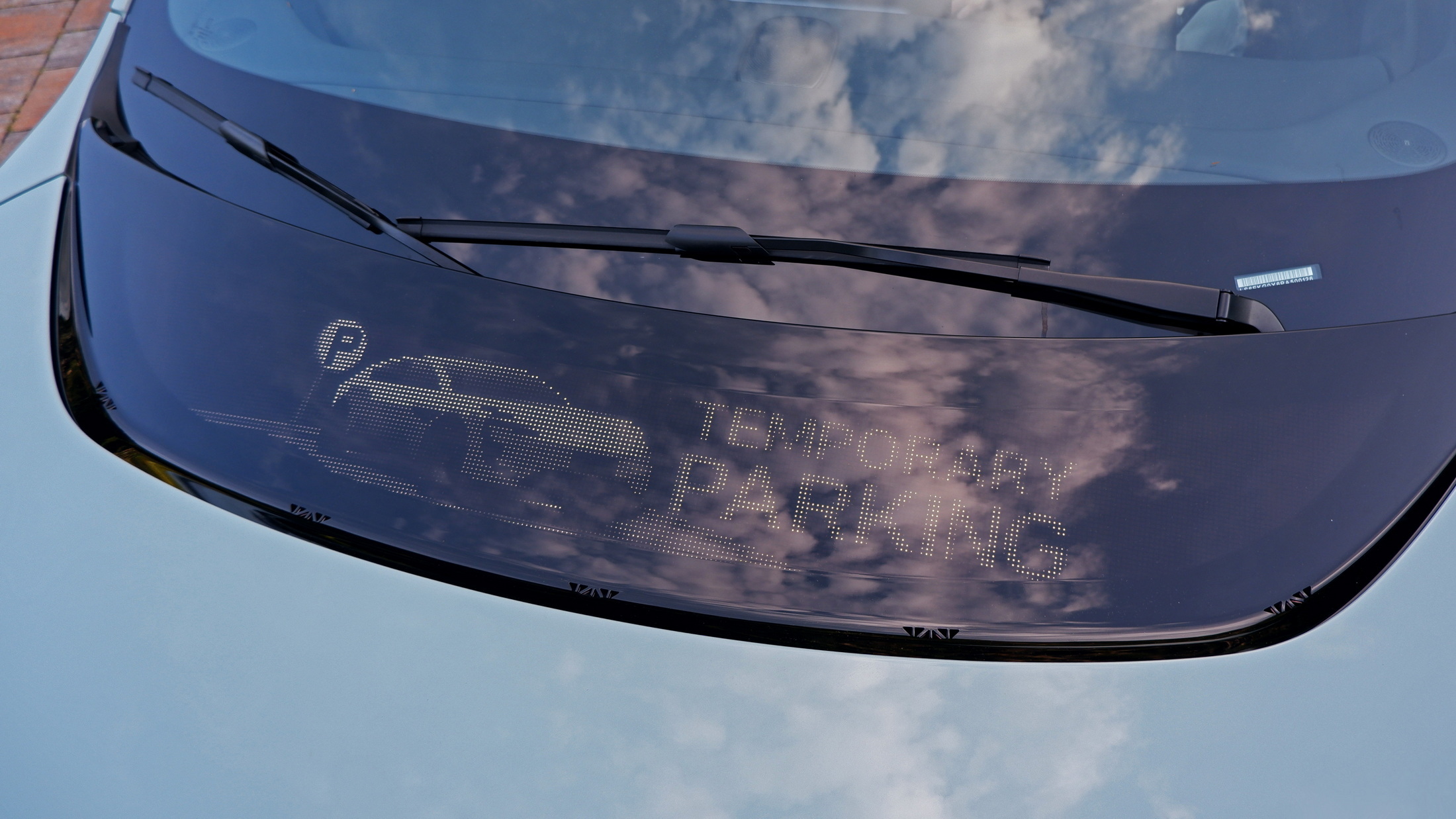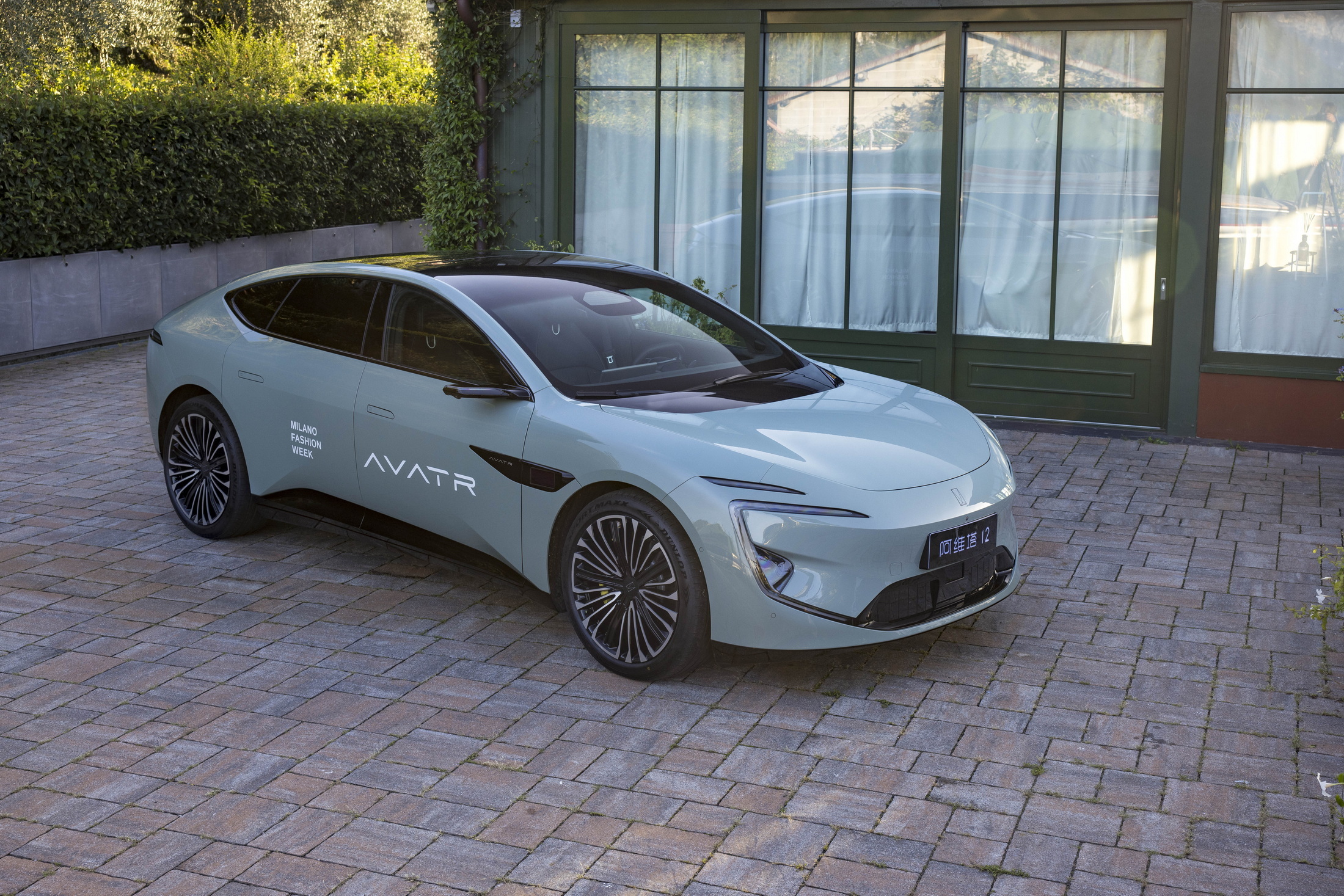As we transition into the era of autonomous vehicles, there’s a growing need for cars to become more user-friendly on the road and to establish communication with other vehicles. This concept of exterior-mounted screen panels, previously seen in various prototypes, is now slowly making its way into production models, as we recently saw with the Chinese brand Avatr.
Both the Avatr 11 crossover and the newly revealed Avatr 12 gran coupe feature a pixel-style LED panel positioned at the base of the windshield, just above the hood. When the panel is turned off, it has a glossy black appearance making it look like an extension of the greenhouse, seamlessly integrating with the vehicle’s design. However, with a bit of programming from inside the cabin, it transforms into a versatile low-resolution screen capable of displaying a wide range of messages and graphics.
More: We Get Up Close To The Avatr 11 And 12 EVs Aiming To Shake Up The Luxury Market
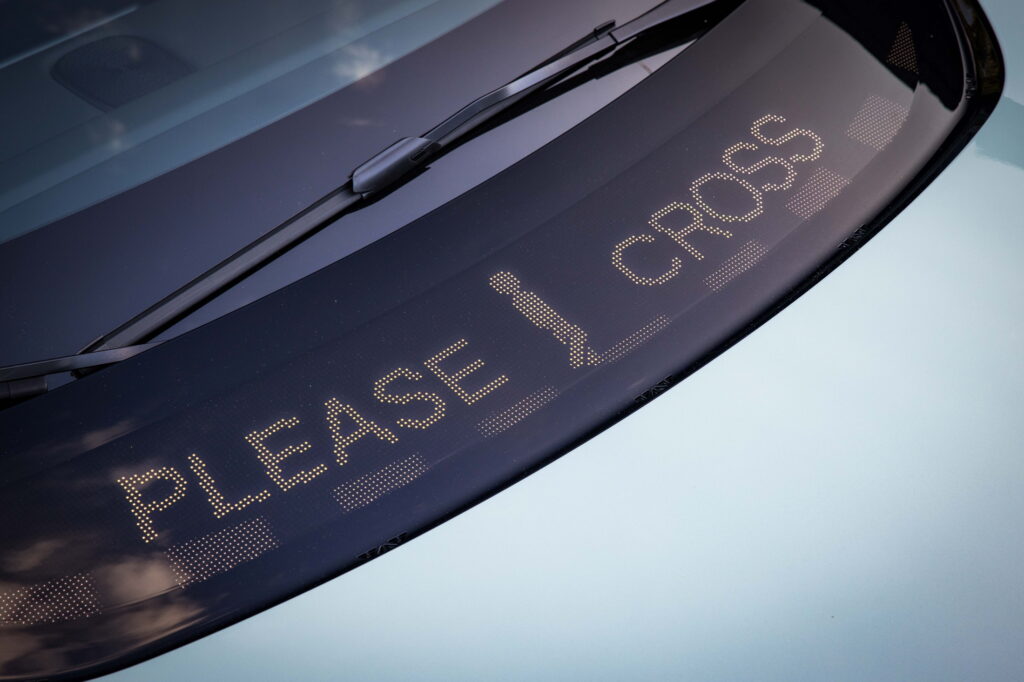
We had the opportunity to explore this novel feature during our recent visit to Milan, where we had a close look at the Avatr 11 and 12 models, although we haven’t had the chance to take them for a spin just yet. Initially, you might assume that the panel could go unnoticed due to its placement and potential reflections, but the dynamic LED graphics immediately captured our attention. Among the messages we observed being showcased on the panel were a “Temporary Parking” sign for brief stops and a “Happy Birthday” message for special occasions.
We spoke with Avatr’s design team, including Olivier Molody, who is the Head of Advanced UX/UI Design at Avatr. He told us that the regulations in China currently allow the panel to be used only when the vehicle is stationary, although this could change in the future and in other markets.
More: U.S. Lawmakers Want Chinese Companies Banned From Testing Self-Driving Tech

The primary purpose of the panel is to facilitate communication between the vehicles and pedestrians or other road users, especially when the cars are operating in autonomous mode. It’s worth noting that the Avatr 11 and 12 are equipped with advanced autonomous systems developed in collaboration with tech giant Huawei, allowing them to perform many tasks autonomously, subject to regional regulations.
Molody pointed out that in the absence of direct eye contact with a human driver, it can be challenging for pedestrians to discern whether an autonomous vehicle intends to stop and yield the right of way. To address this issue, the design team incorporated a “Please Cross” sign featuring animated footstep and arrow graphics, effectively communicating the vehicle’s intentions.
The UX/UI Design boss revealed that Avatr could potentially expand the abilities of the panel in the future, allowing it to display more images or other graphics with the help of over-the-air updates. It remains to be seen if this feature will become widely adopted by other automakers, or if designers will find alternative ways of dealing with the issue of human-machine interaction.




